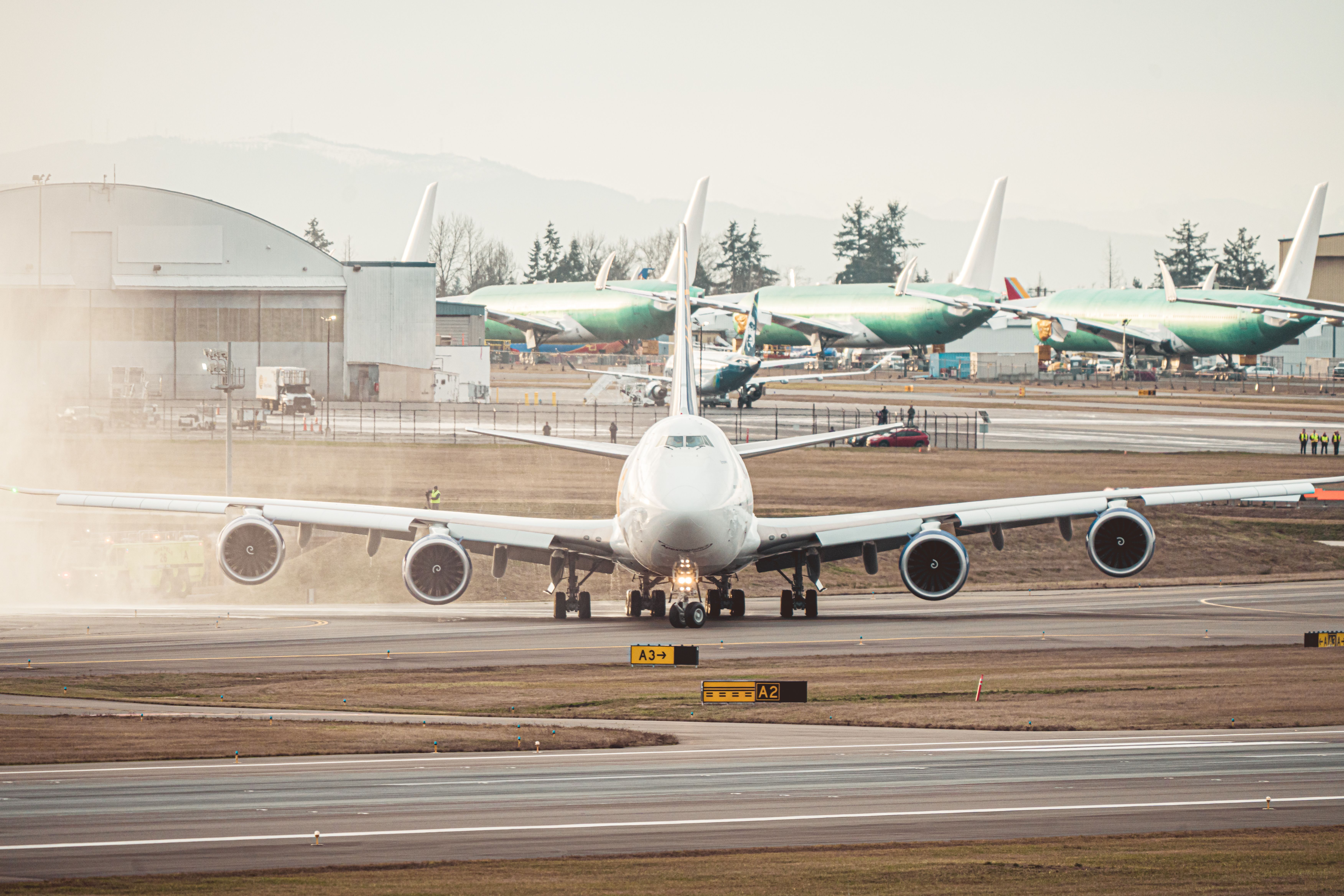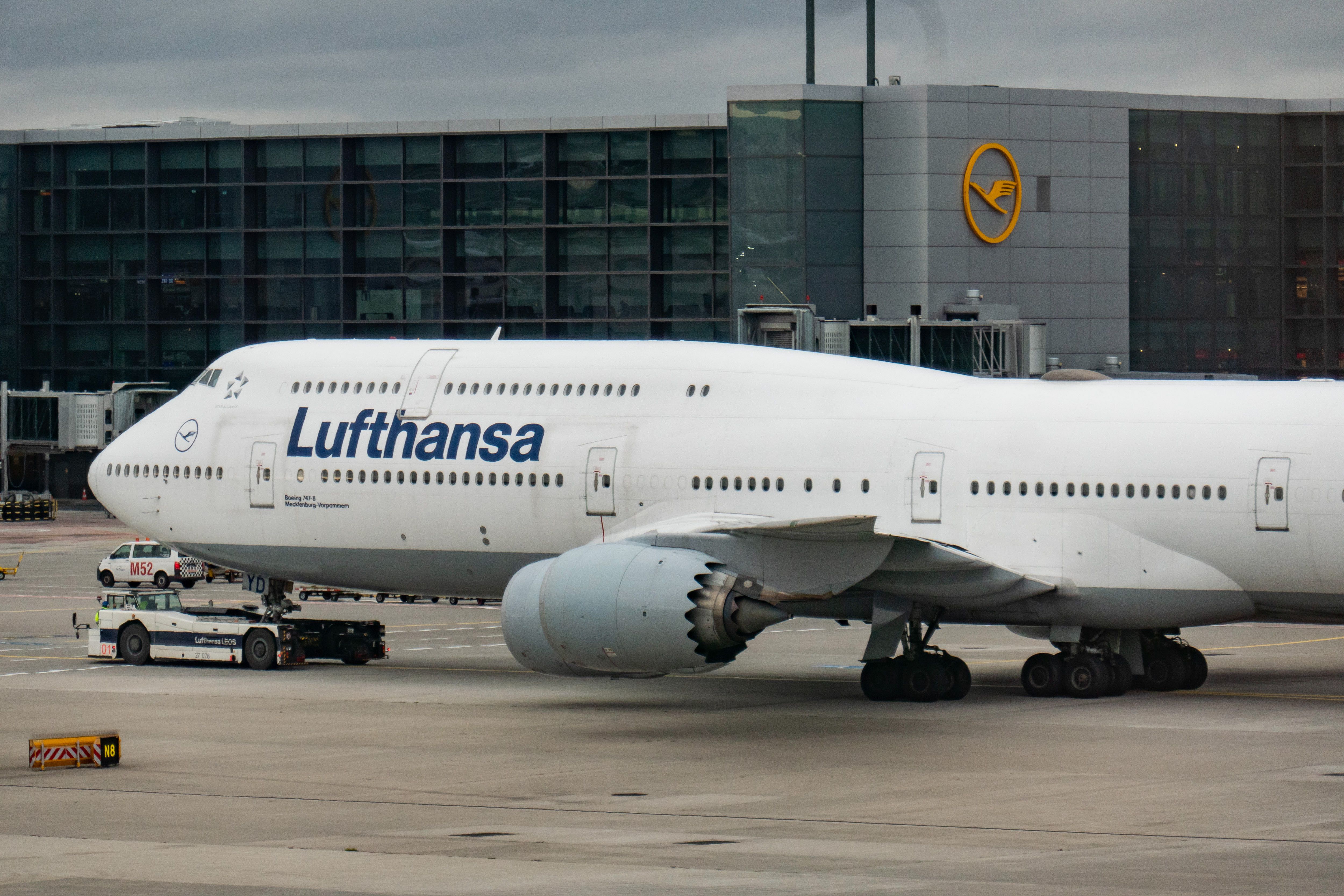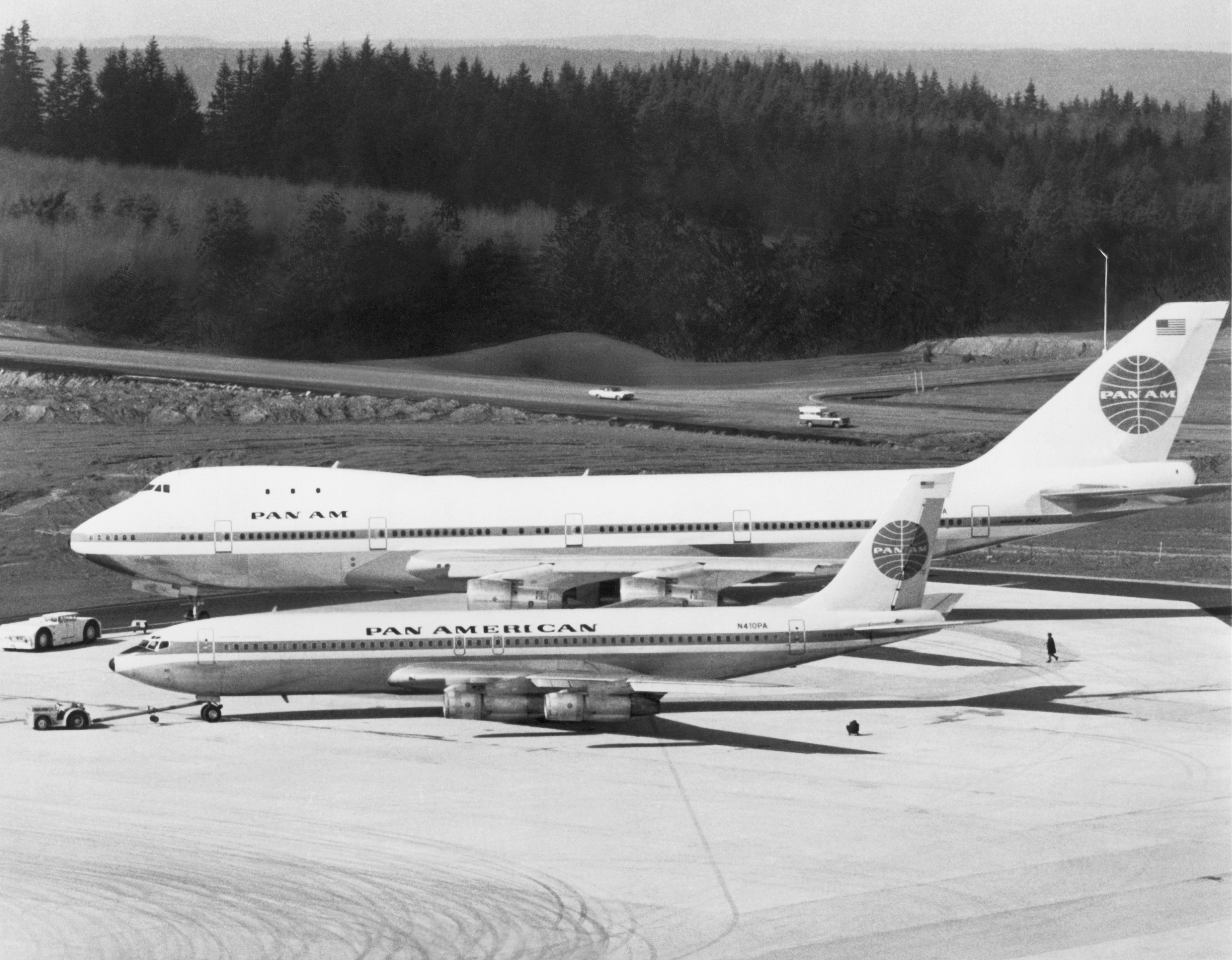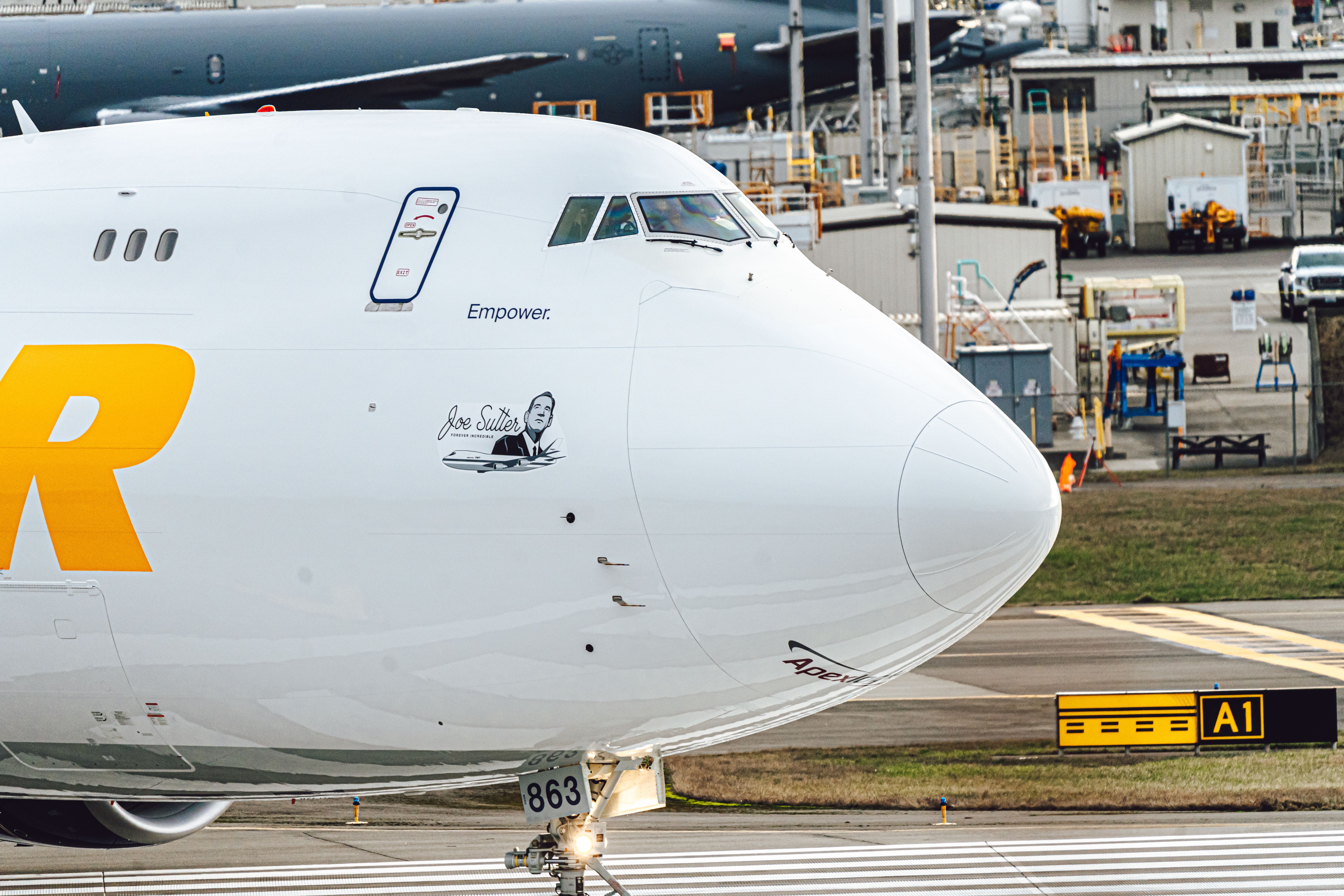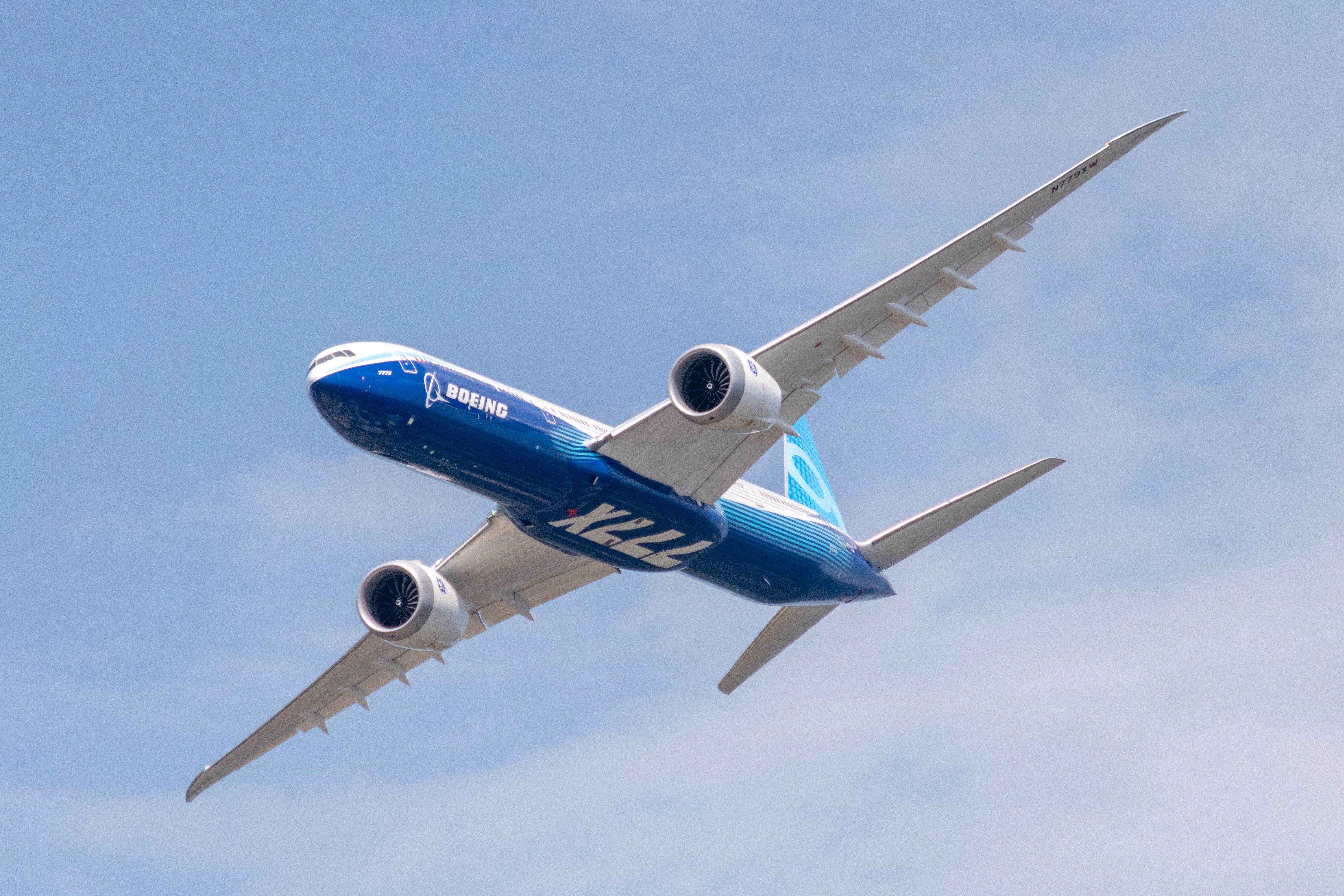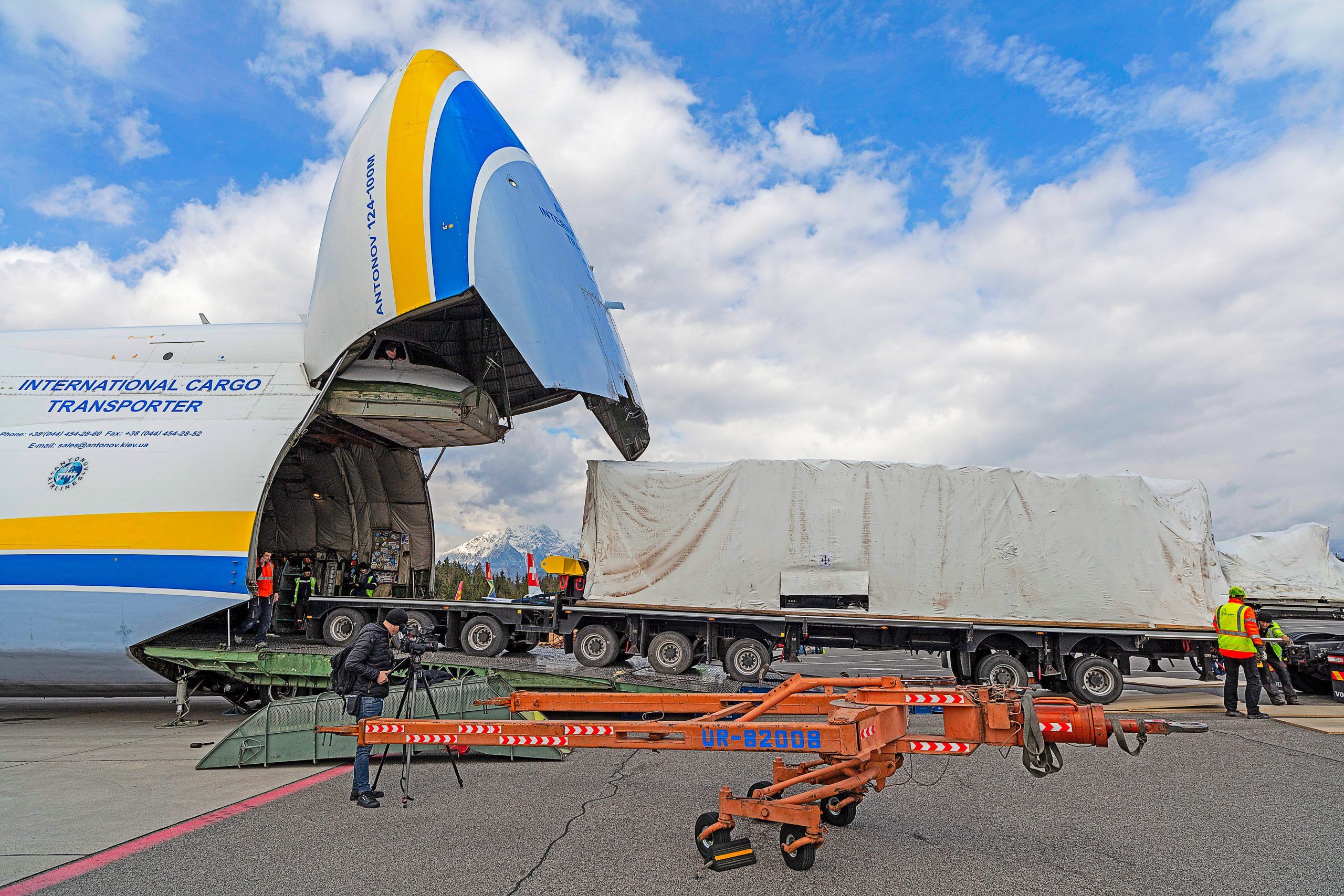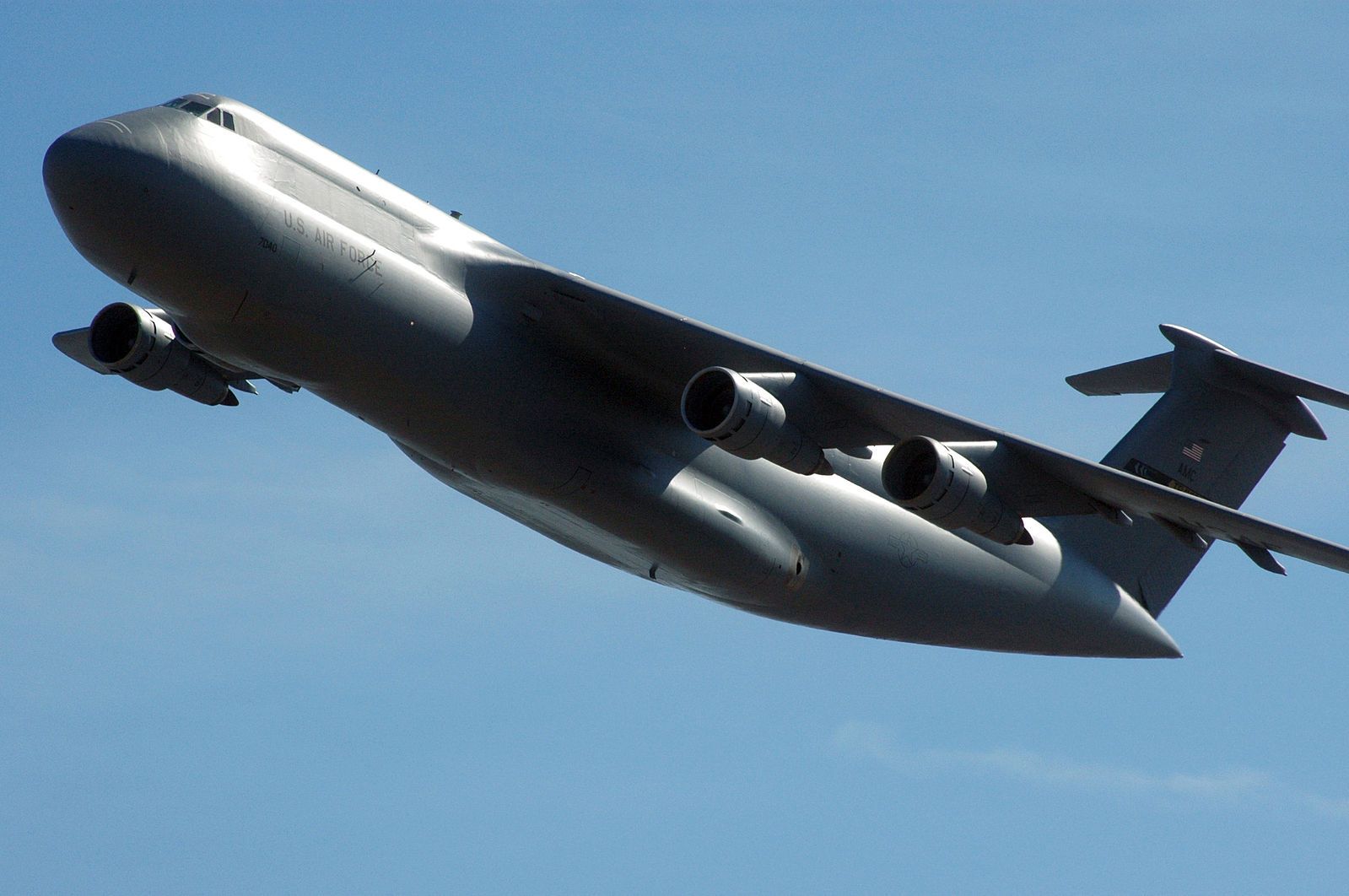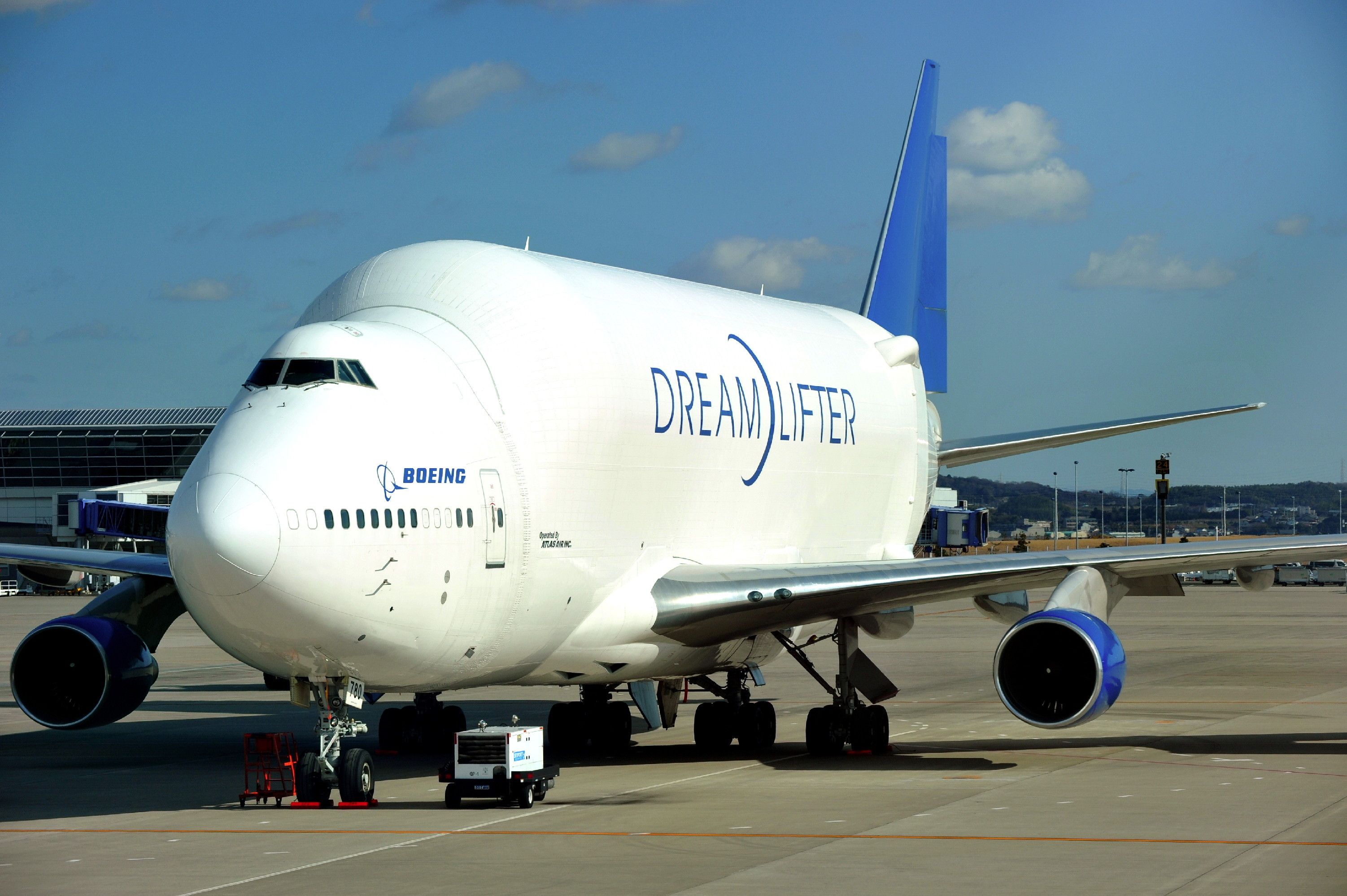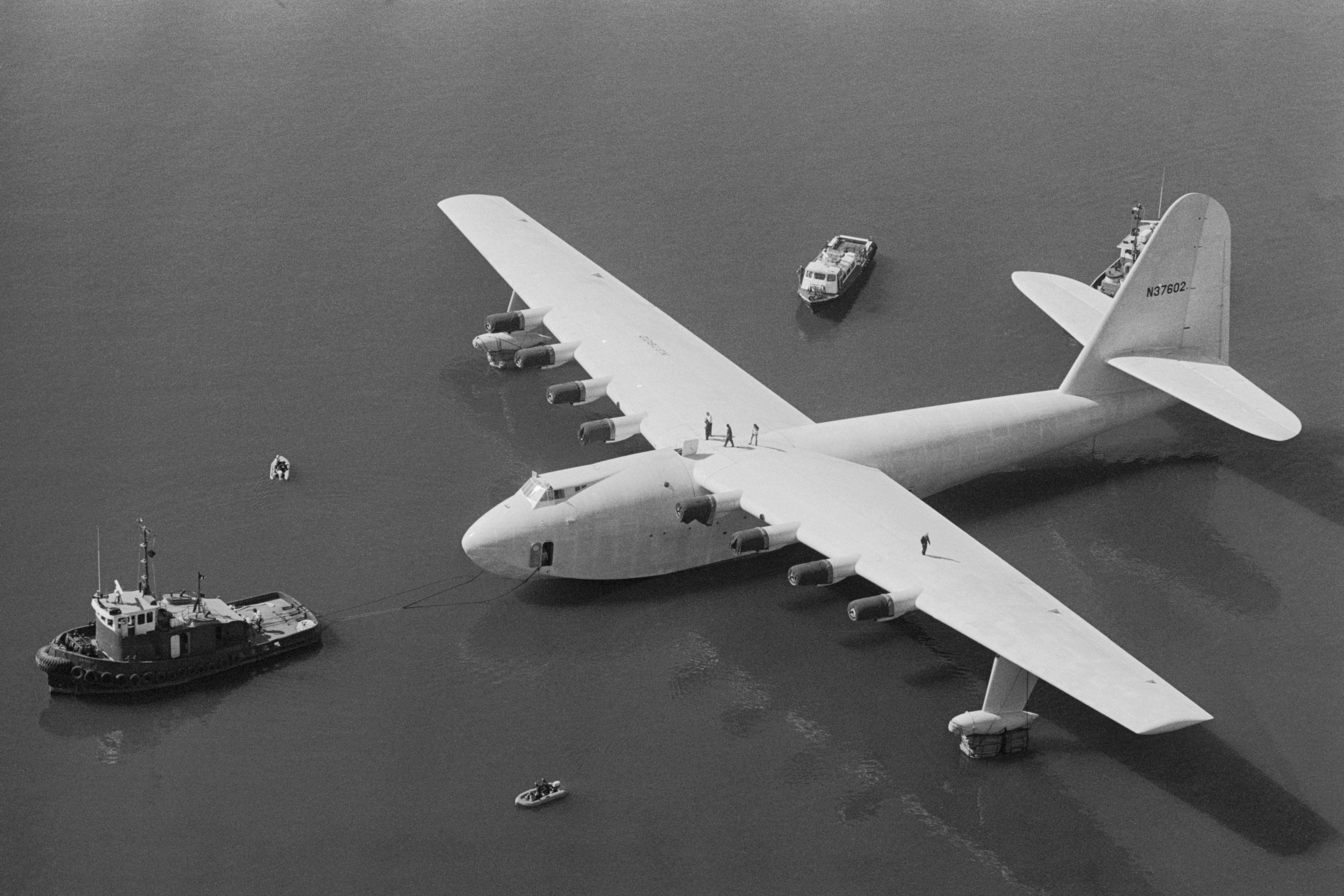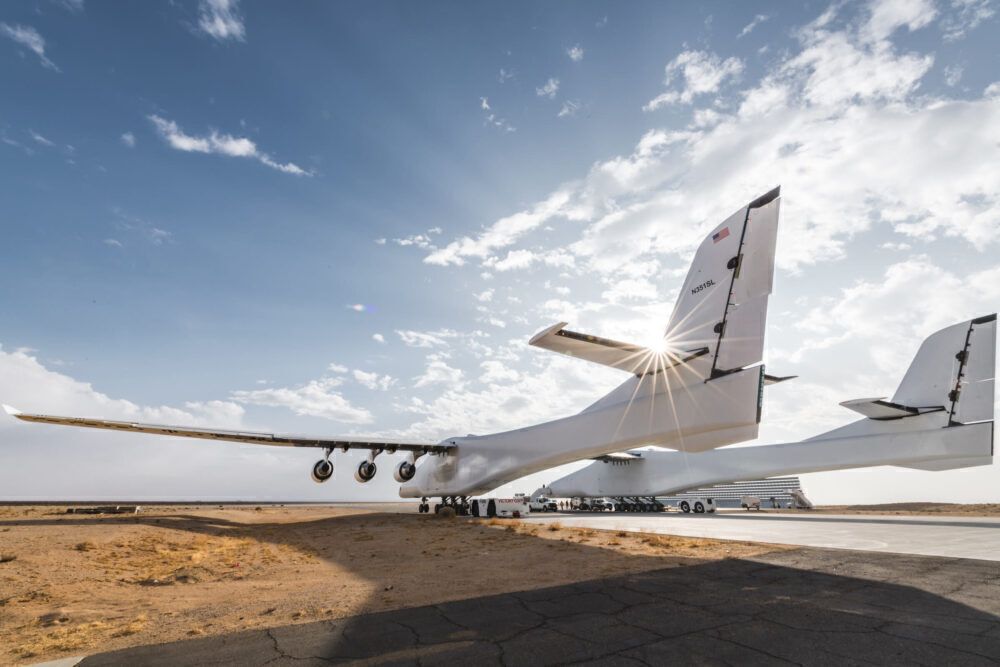Airplanes have gone from small and lithe powered by propellors to heavy machines launched thousands of feet into the air by turbofan jet engines in one hundred years. But which of these engineering marvels is the largest aircraft ever built?We all know the Airbus A380 is the largest passenger jet - and likely will be for some time. Here, we take a look at this and other large passenger jets, as well as transport aircraft and some one-off developments.There are many ways to measure large aircraft - including length, weight, volume, or wingspan. We'll consider all of this, but bear in mind that other planes could also have made the list when considering specific parameters.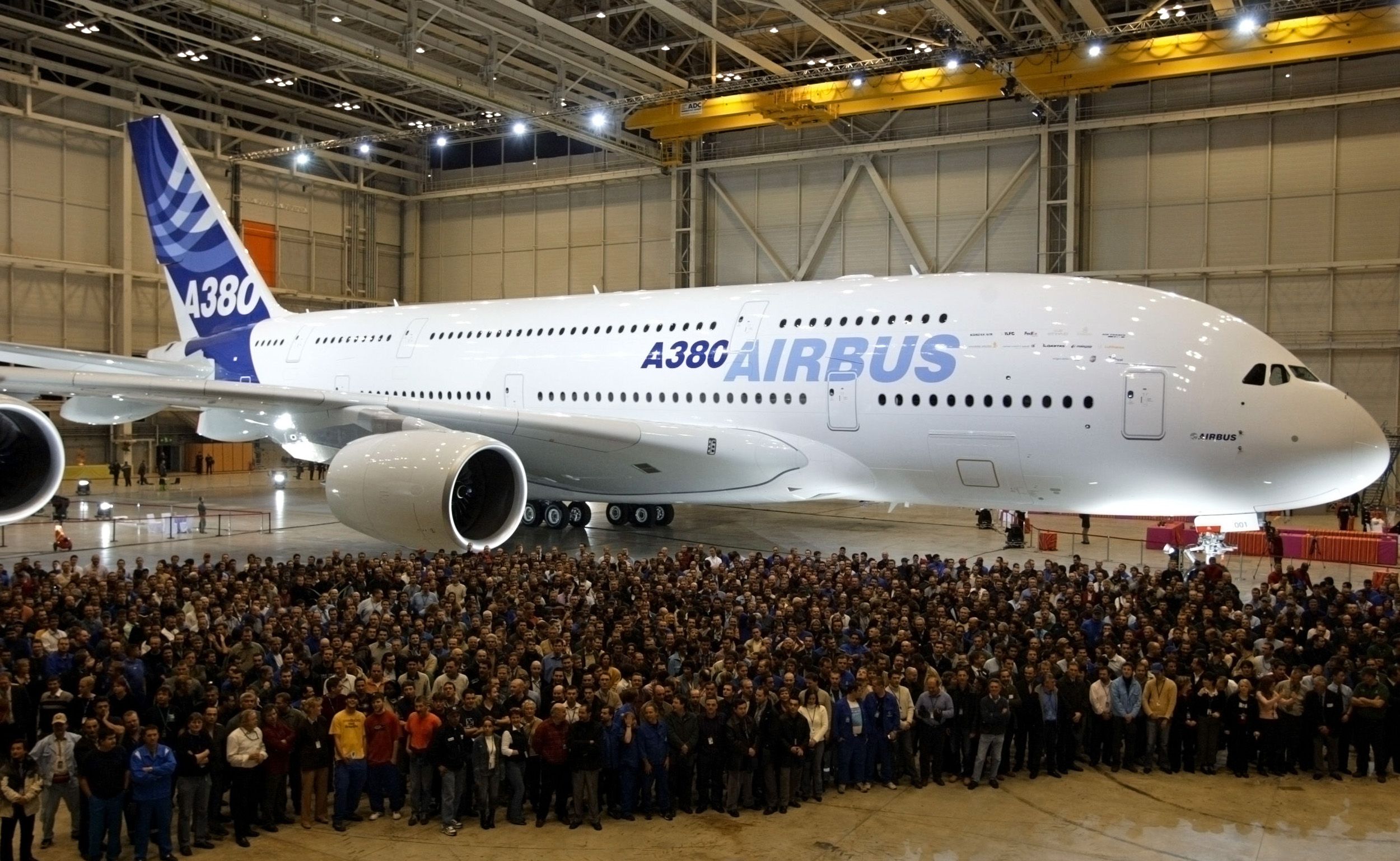
Airbus A380
The A380 is the largest passenger jet ever built by passenger capacity, volume, weight, and wingspan. The Boeing 747-8 beats it for length, however, as will the upcoming Boeing 777-9 (technically built but not yet in service).
It offers a maximum passenger capacity (exit limit) of 853, but airlines operate it with a typical capacity of 400 to 550 seats. Such high capacity demonstrates a world-class feat of engineering. But unfortunately, it has not worked out as well as hoped for (most) airlines.
Stay informed: Sign up for our daily and weekly aviation news digests.
The exception is Emirates, which has made a success of the Superjumbo with its hub-based model, but most airlines have struggled. The rise in the ability of twin-engine aircraft and the shift away from hub-and-spoke operations in favor of point-to-point damaged the aircraft's potential.
The slowdown following the events of 2020 sealed its fate for several airlines. However, several who voiced an early retirement for the double-deckers have since brought them back into service with the rebound of air travel demand.
Sadly, with increasing retirements, it is failing to find a new use. Only Hi Fly once took on a second-hand aircraft for charter use, but even that airline has now retired it. Its potential in the cargo market is limited by its design, and although it would make an excellent private jet or VIP transport, its size and limitations have so far stopped this from happening.
Boeing 747-8
The 747 is, of course, the other very large passenger jet. The latest 747-8 is the largest version offered, coming in at just over three meters longer than the A380. But it has a lower maximum capacity of 605 (again, this is the maximum exit limit, the typical capacity is around 450). It also has a much shorter wingspan than the Superjumbo (68.4 meters compared to 79.95 meters), which has been a benefit as it increases the number of airports at which it can operate.
Until the A380, the 747 was the largest passenger aircraft flying. This has been its hallmark since its launch in 1968. It was developed in collaboration with Pan American World Airways (Pan Am). The airline had seen success with the Boeing 707 and wanted to take this further with a new aircraft over twice the size. It was, in fact, originally planned with a full-length upper deck, but this could not be made to work with safety requirements.
Pan Am first placed an order for 25 747s near the inception of the production program. Over the years, Boeing created five major variants of the jumbo, the -100, -200, -300, -400, and -8, with the most popular being the -400, amounting to almost half of all Boeing 747 production. Though Pan Am was the first operator of the 747, Japan Airlines was the airline with the highest number, operating 112 over the years.
On January 31, the final Boeing 747 ever manufactured was delivered to Atlas Air, currently the largest operator of 747 aircraft worldwide. In a ceremony that will go down in the history books, Boeing celebrated the 54-year production life of the first super jumbo ever made, featuring people like Kim Smith, the final production leader of the 747 program, and a few Incredibles, who worked on the very first aircraft.
In the 54 years of production, 1,574 747s were made and flown for 46 airlines, some of the most notable being Pan Am, British Airways, Japan Airlines, Virgin Australia, and Lufthansa. Aircraft 1,574 was nicknamed Empower and the penultimate, which also was delivered to Atlas Air, was nicknamed Inspire. As a tribute to Joe Sutter, the "founding father" of the 747 if you will, Boeing and Atlas Air placed a decal on the right side of the aircraft that reads forever incredible.
Joe Sutter led a group of almost 4,500 engineers who developed the aircraft. Sutter will forever be a legend in the aviation industry. His grandson was present at the final delivery event and recounted to Simple Flying that all the grandchildren would spend time with grandpa and that meant always being around planes. Charles Trippe, the grandson of Pan Am founder Juan Trippe was also present, carrying a flag with the Pan Am logo at the beginning of the event.
Simple Flying was present at the event and the aircraft's departure from Paine Field the following day, both historic moments which brought tears to many eyes. As a tribute to the Queen of the Skies, the pilots of the Atlas 747 spent hours in the air, flying a flight path in the shape of a crown with the number 7-4-7
Boeing 777-9
As test aircraft are now flying, it seems appropriate to include Boeing's upcoming 777X. The largest variant, the 777-9, will be the longest passenger aircraft ever launched, at just over 76 meters. And it will offer a typical capacity of up to 426, not far off that of the 747-8, making it the perfect replacement for the 747.
Click here to read the latest on the 777X.
Unlike the other passenger aircraft on this list, the 777X is a twin-engine aircraft. And these new GE9X engines are the largest and most powerful commercial engines ever built - larger than a 737's fuselage! The 777X will bring a new era of very high-capacity, very efficient twins. We are unlikely to see larger four-engine commercial jets again for some time. Still, there could be more developments in this area, as Boom Supersonic recently re-designed its upcoming Overture as a quadjet.
We still have to wait a while to see the 777X in airline use, as of March, the manufacturer expected to deliver its first aircraft in 2025. Development has been delayed due to engine problems and issues with structural testing. And production delays have also crept in due to the slowdown during the pandemic.
Qatar Airways currently expects to take its first aircraft in 2025, although the airline has hopes Boeing may move the projected date forward. The model's largest customer is Emirates, with 150 units on order. In February 2023, Air India became the latest customer of the 777X, ordering ten of the type in one of the largest aircraft orders in history.
Antonov An-124
Tragically, the largest Antonov aircraft operational is no longer the Antonov An-225 Mriya. Following Russia's invasion of Ukraine and the bombing of the Gostomel Airport on the first day of the war, the Ukrainian six-engined 'Dream' cargo-only jet, or what is left of it, sits among the rubble outside of Kyiv.
Sticking with the same manufacturer, the An-124 is smaller than the An-225 but is one of the largest commercially developed freighters. It was launched in 1982, and 55 aircraft have been built. Until the 747-8 was introduced, it was the heaviest commercially produced aircraft.
As of May 2023, according to data from ch-aviation.com, 18 An-124 aircraft are currently active. Most are operated by the Russian Air Force, and two by Russian cargo-specialist Volga-Dnepr. Ukraine's freight specialist Antonov Airlines still flies four units, and UAE-based Maximus Air Cargo has one.
Lockheed C-5 Galaxy
Carrying on with large transport aircraft, the C-5 Galaxy is also high up the list for size and payload. It is a military transporter aircraft built by US manufacturer Lockheed and entered service in 1970. It followed other successful transporters, such as the C-130 Hercules, but simply needed to be bigger.
At just over 75 meters long, it is bigger than both the A380 and the An-124. It can carry a payload of 127 tonnes and adds inflight refueling for a huge range. It remains in active service with the US Air Force, although several large transport planes have followed it. The Boeing C-17 Globemaster is a leading example - it's big but not as big as the C-5.
Interestingly, Lockheed was also interested in an even larger replacement. The so-called VLST (Very Large Subsonic Transport) was proposed in the 1990s but never developed. A passenger version would have two decks, four aisles and carry up to 900 passengers.
Airbus Beluga XL
Technically, the Beluga XL is not an aircraft type but a modification of the Airbus A330. As such, some may question whether it should appear on such a list. But however you treat it, it is one of the largest aircraft you will see regularly flying. By volume, it is the largest. It offers a fuselage volume of 2,209 cubic meters. For comparison, Boeing's Dreamlifter comes in behind at 1,840 cubic meters.
From the outset, Airbus has split aircraft construction over several locations. It was formed as a consortium of several European manufacturers to take on Boeing. Airbus built the Beluga XL (and its predecessor Beluga) to transport its aircraft components.
The Beluga was introduced in 1995, based on the A300 airframe, and used mainly for A340 construction. The Beluga XL, based on the A330-200, followed in early 2000. Its more substantial size was needed for larger A350 components.
Boeing Dreamlifter
The Dreamlifter is Boeing's modified fuselage transporter. This is based on a stretched 747-400 fuselage, with an innovative tail swing door to allow full access to the fuselage.
It was designed to carry Boeing 787 parts from suppliers in Italy and Japan (as well as US locations) to final assembly facilities in Washington and South Carolina. The first Dreamlifter entered service in 2007, and there is now a fleet of four.
It is a huge aircraft but beaten by others regarding statistics. For fuselage volume, it comes in behind the Beluga XL. And while it is longer than the Beluga XL and the 747-400, it is beaten by the 747-8. Its four-engine 747 base offers a much higher payload than the Beluga XL but less than half that of the An-225 while it was still operational.
Hughes H-4 Hercules
The Hughes H-4 Hercules was one of the largest aircraft ever built but never moved beyond the one prototype version. It is a flying boat transport and was designed for use during the Second World War. It could carry 750 troops or two 30-ton M4 tanks. However, it did not get flying until 1947, after the war had ended.
It has the second largest wingspan ever (after the Stratolaunch, which we will look at next), at 97.8 meters, and is powered by eight Pratt & Whitney engines. To conserve metals during the war years, it has a wooden fuselage, hence its nickname of the 'Spruce Goose.'
The one prototype did make test flights but never entered service. It remains preserved and on display at the Evergreen Aviation and Space Museum in Oregon, US.
Stratolaunch
Last on our list is the Stratolaunch aircraft (with the full name of the Scaled Composites Model 351 Stratolaunch). This huge double-fuselage plane has the largest wingspan of any aircraft ever, an astonishing 117 meters (the closest behind this was the An-225 at 88.4 meters).
It was designed to carry a rocket, weighing up to 250 tonnes, between the fuselages for launch into orbit. Much of the technology, and its six engines, are based on the 747-400. The two fuselages are each 73 meters long - and in case you are wondering, the pilots sit in the right-hand cockpit. The left side is unpressurized and used just for equipment.
There have been delays to the program, most notably following the death of its founder Paul Allen in 2018. The new owner, Cerberus Capital Management, decided to shift the role of the aircraft to be a launch vehicle for reusable hypersonic flight research vehicles. After a two-year delay from its first flight, the Stratolaunch flew again in April 2021. Recently, the sixth test flight of aircraft was interrupted after encountering an "unexpected test result."
Hopefully, this has been an interesting look at some of the largest aircraft around. Remember, there are many ways to measure such aircraft, and several others could have made the list. Feel free to discuss the listed ones, or any others, in the comments.

